Author: William M. Peaster, Bankless; Translator: Wuzhu, Golden Finance
Intellectual property (IP) includes creations such as artwork, designs, images, inventions, names and symbols.
This covers a wide range of assets from AI models to gaming assets.
Despite its enormous value, estimated in the trillions of dollars, IP often remains stuck in outdated legal systems, making it difficult to license, monetize and effectively trade.
That's where the new Story Network comes in, a new blockchain designed to turn IP into liquid, programmable and ownable digital assets.
Since the chain is brand new and centered around NFTs, it's possible to create IP in a fraction of the size of an IP.
What is Story Network?
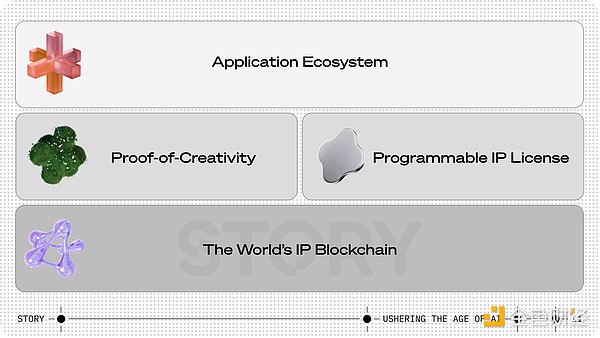
Story Network was created specifically to bring IP on-chain, making it easier to manage and monetize.
On Story Network, IP is represented as on-chain assets called IP assets, or NFTs. These NFTs carry detailed metadata about the underlying IP and serve as its digital representation. They can be linked to existing NFTs, such as CryptoPunks, or issued to represent off-chain projects.
Each IP asset is linked to an IP account, which is a specialized smart contract that manages interactions and data related to the IP.
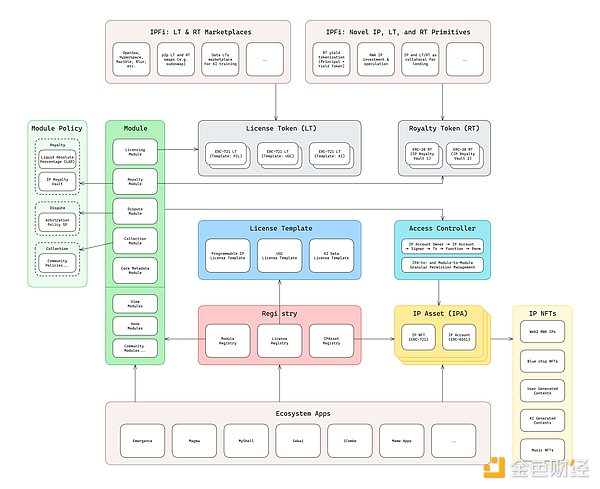
At the heart of Story Network is its Proof of Creativity (PoC) protocol, which facilitates the creation and management of IP assets, enabling use cases such as permissionless licensing and automatic payment of royalties.
Another key pillar is the Programmable IP License (PIL), a legal framework that connects the on-chain world with the traditional legal system, ensuring that the digital representation of IP on Story Network is enforceable in the real world.
How is Story Network designed?
Story Network is a Layer 1 blockchain optimized for efficient processing of complex IP data structures, relying on elements from the Ethereum Virtual Machine (EVM) and the Cosmos SDK.
Notably, Story Network is EVM-equivalent, meaning it supports the same code execution environment as Ethereum. This compatibility allows developers to port existing applications and smart contracts written in Ethereum’s popular Solidity programming language to Story Network with no or minimal changes.
As for the Cosmos SDK, it provides the underlying framework for Story Network’s consensus and networking layers, with high scalability and low transaction costs. This design choice also allows Story Network to interoperate with other blockchains within the Cosmos ecosystem, enhancing its flexibility.
Noun and Verb Structure
Story Network employs a noun and verb architecture when dealing with IP.
IP assets are nouns, i.e. things. Recall that these are NFTs that represent intellectual property on Story Network. These assets contain metadata and are associated with an IP account that manages its data and interactions.
Story’s modules, on the other hand, are verbs. Modules are customizable programs that define and extend the functionality of an IP account. Developers can create modules to meet a variety of business logic needs.
For example, the licensing module on Story Network simplifies the licensing process. Creators can define licensing terms and attach them to their IP assets, allowing others to mint licensed tokens.
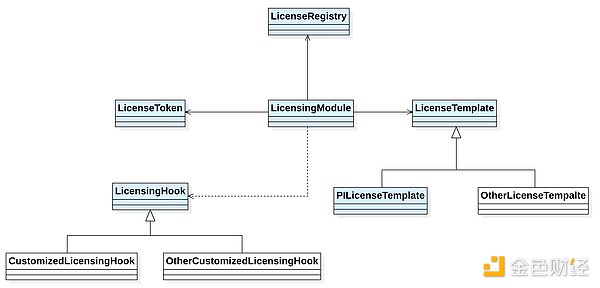
The aforementioned PIL framework then provides standardized, customizable legal contracts that define how the IP can be used, covering aspects such as commercial use, attribution, and royalty terms.
In addition, there is a royalty module that automatically distributes royalties. When an IP asset is used or generates revenue, the royalty module ensures that payments are automatically distributed according to predefined royalty terms.
The module even tracks the relationship between original and derivative works, ensuring that all contributors receive a fair share of royalties. This feature is particularly useful for multiple creators and complex IP relationships.
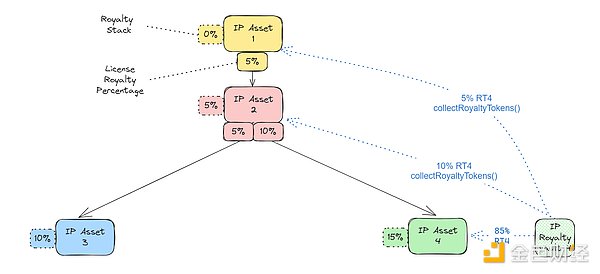
Why mark IP on Story Network?
Tokenizing IP on Story Network has several significant benefits:
Liquidity – IP can be traded or used as collateral, creating new financial opportunities.
Programmability – Automated actions such as royalty payments can be embedded in IP NFTs, streamlining management.
Transparency – The underlying blockchain provides a clear and immutable record of IP ownership and transactions.
These are all compelling pillars for content creators, but what will actual use cases look like?
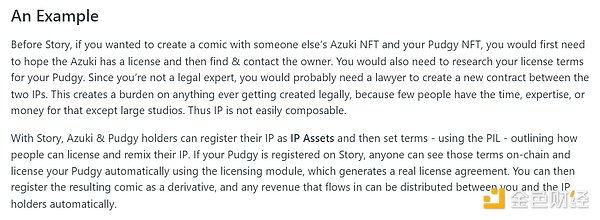
For example, artists, musicians, writers, etc. can register their IP as NFTs on Story Network, set licensing terms, and automatically pay royalties. This makes it easier to control and monetize their work.
For developers, they can build applications that leverage tokenized IP. Think AI model marketplaces, content remix platforms, and DeFi applications that use IP NFTs as collateral.
The first two application examples in the Story ecosystem are Magma and Mahojin. The former is a collaborative design tool that uses Story Network to manage and monetize creative works through NFTs, while the latter is a platform for AI training data and models.
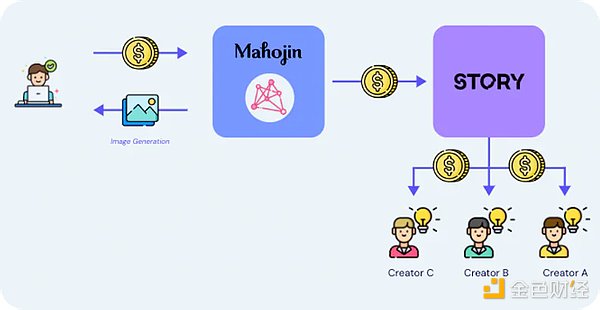
Summary
How will making IP programmable and liquid affect the interaction between creators and consumers? Will IP tokenization and trading democratize access to creative works? How can the PIL system effectively adapt to a diverse global legal environment, especially as AI-generated content becomes more common?
The answers to these questions remain to be seen, but Story Network is diving in like never before and hopes to revolutionize the future of digital IP through the crypto economy. As the chain grows and develops, it's worth watching for its potential to redefine IP management to better meet the content challenges of the 21st century.
So can Story win? We'll have to wait and see, but this innovative foray into new territory is still exciting - stay tuned for updates on this project!
 JinseFinance
JinseFinance
 JinseFinance
JinseFinance Weiliang
Weiliang Miyuki
Miyuki JinseFinance
JinseFinance JinseFinance
JinseFinance cryptopotato
cryptopotato Beincrypto
Beincrypto Others
Others Cointelegraph
Cointelegraph Cointelegraph
Cointelegraph